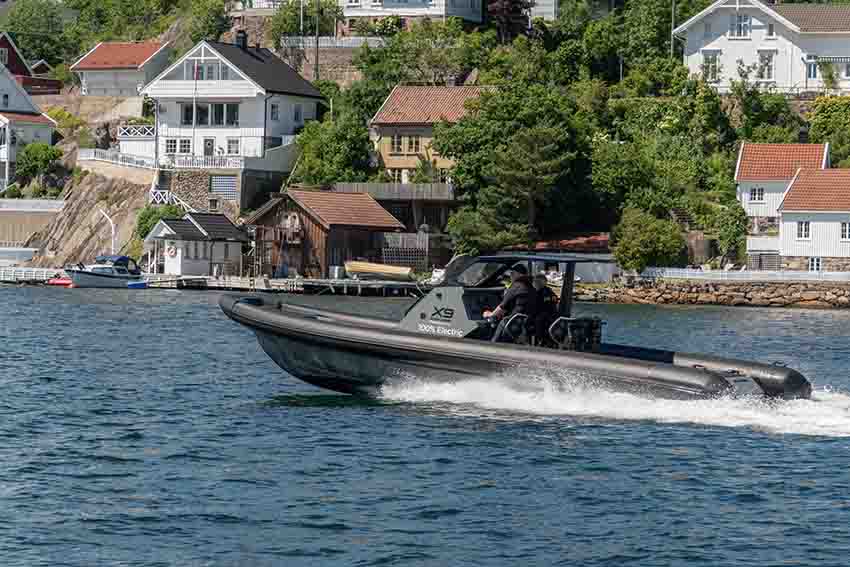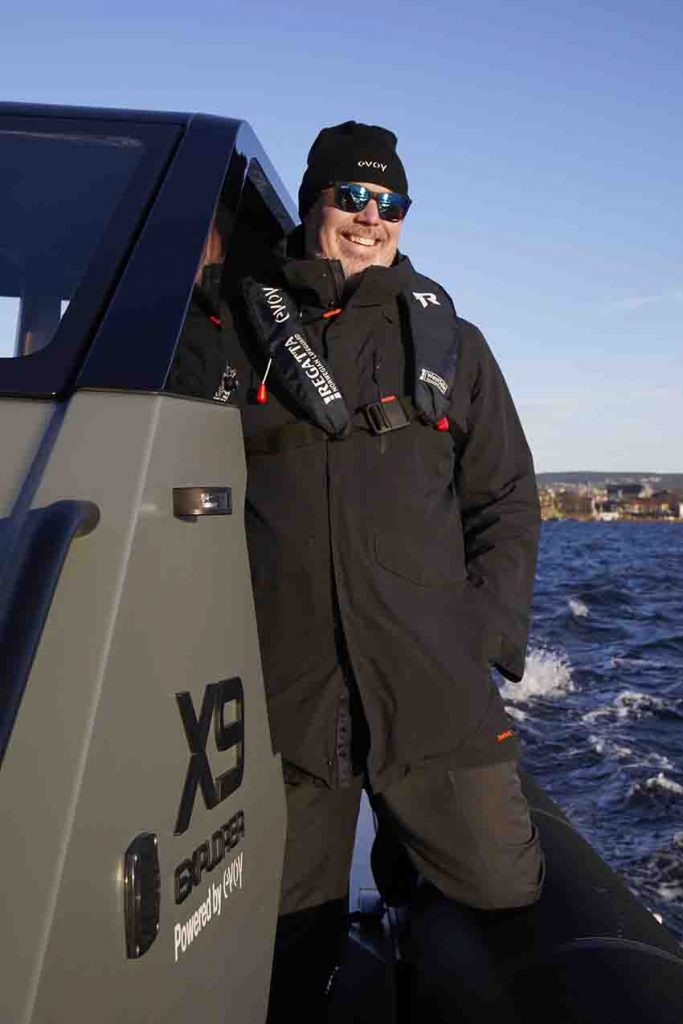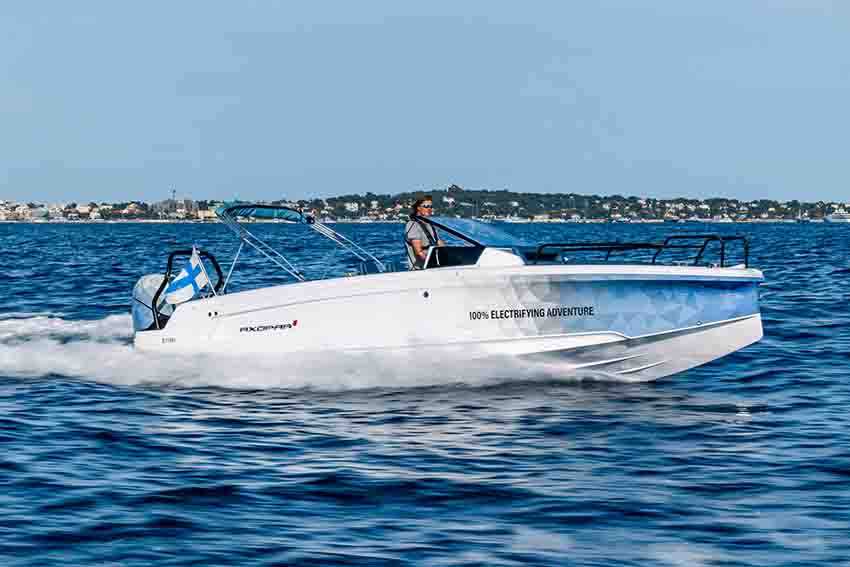Based in Florø in Norway, Evoy has gained a reputation as the marine industry’s foremost producer and supplier of electric ‘plug and play’ inboard and outboard motors, for commercial and leisure boats in the 20ft to 50ft size range.
In 2018, the first demo boat, EVOY1 was born, with the first fully electrified Evoy inboard propulsion system, launched and ‘christened’ by Norwegian Prime Minister, Erna Solberg, and capable of an unofficial world record of 55 knots speed.
Since those early days, Evoy has steadily grown through a series of investment rounds and has been successful in raising the required capital to develop the business further.
With regular participation at the main international boat shows and a steadily increasing list of international boat builders and engine dealer customers, today’s Evoy is a thriving and growing marine business that is very much here to stay.
Easy Engfineering: What are the main areas of activity of the company?
Evoy: Producers of 120hp to 400hp electric marine propulsion systems with a choice of battery packs to suit every type of speed and distance requirement. Evoy motors can be installed on brand new boats, or ‘retrofitted’ to existing hulls.
Evoy offer support and training to every customer with advice and technical help in how to get the best from their electric motor. The company maintains a visible presence within the market, giving customers the confidence and assurance, they need when thinking about switching from fossil-fuel boating to Evoy clean electric power.

E.E: What’s the news about new products?
Evoy: The finalized design for the new exterior cowling of the Evoy 300hp outboard motor was unveiled at the boot Düsseldorf show in January.
In collaboration with Eker Design, the emphasis was placed on a clean, versatile design that would complement the boats of our partners. The ‘form follows function’ design suitably reflects the power of the Evoy motor with an aggressive, forward-looking expression and forward-facing split lines between the various covers. The cowling design gives easy access to the service points inside the compartment without having to dismantle the largest covers behind the motor.
The monotone colour combination and graphic design elements with the Evoy logo, the stripe and the 300+ decal discreetly underline a modern take on speed and power.
E.E: What are the ranges of products?
Evoy: The ‘Breeze’ series of outboard engines, including a 120+hp / 90+ kW and the ‘Storm’ series including a 300+hp / 225+ kW outboard. With 200+hp and 400+hp outboards coming later in 2024.
Also available are the ‘Breeze’ 120+hp / 90+ kW inboard engine, and the ‘Hurricane’ 400+hp / 300+ kW inboard engine.
Depending upon the extent of boat usage and range required, three battery pack levels are available for each engine model, giving the customer a good spread of choice depending upon needs.
E.E: At what stage is the market where you are currently active?
Evoy: The electrification of boats is still in the early stages within marine, and still some years behind the automotive industry, for example.
There are two main factors holding back the acceptance of marine electric propulsion. One is price, and the other has been the limited range that electric can offer over petrol and diesel equivalents.
With that said, there are more and more customers switching to electric marine propulsion every day, and as soon as the cost of installing electric comes down, then uptake will become quicker and more widespread.

The issue of cost, along with a restricted number of charging facilities in many boating areas, has created reluctance within some corners of the market. But the good news is that all of these issues are gradually being addressed and we are witnessing steady improvements over time.
As far as range is concerned, the irony is that most private, leisure boat users normally don’t drive long distances anyway, and cruise happily with batteries as of today.
With two batteries range can be extended up to 50-100 nautical miles at slow speeds of around 5 knots, and 15-30 nm at 20-30 knots. Extra batteries can be added for increased range. And some boatbuilders are coming up with ultra-light hulls and/or semi- or full-foiling hulls, for even longer ranges.
Batteries get more energy dense every year, with improvements, typically, 5-10% per year, and battery prices are decreasing gradually so that year by year, boat users will get more kWh and less weight and volume for the same cost.
The price of an electric motor including battery system is circa 2-3 times the cost of a fossil motor of the same power output. However, on average electricity is 6-7 times cheaper in terms of how much kw you get out. Depending upon how much you are using the boat, the ROI can be significant – with some customers only about a year. And with electric motor systems you have far less maintenance to worry about, saving you time, hassle, and money.
Regard the charging infrastructure, companies such as Aqua Superpower and Plug are investing heavily in infrastructure, and we are seeing more and more charging sites opening all the time.
E.E: What can you tell us about market trends?
Evoy: As far as Evoy is concerned, the most significant ‘trend’ recently has been supply partnerships signed with major ‘production’ boat manufacturers, whose annual boat production targets are measured in the hundreds and thousands each year.
Significant partnership agreements for the development and future supply of Evoy electric engines have been signed recently with the likes of Axopar Boats and Nimbus AB, both of whom are regarded as high-volume boat producers.
Previously, the manufacture and supply of electric motors has been more associated with specialist, low-volume manufacturers of boats, and we are now starting to see a shift in attitudes with the larger manufacturers showing a higher degree of interest than ever before.

Leif Stavostrand, CEO of Evoy
E.E: What are the most innovative products marketed?
Evoy: Beyond the manufacture of engines, Evoy are quietly developing a raft of associated onboard e-technology that will improve and enhance electric boating in the future.
With improved user-interfaces biased more towards the use of visual images and pictures, Evoy’s e-cockpit solution, for example, will become the central hub for receiving and managing all aspects of the boat’s information.
Everything from battery charge status, to navigation, entertainment and safety, the e-cockpit will put the user first with a fully connected experience, linking useful information, such as nearby chargers, for example.
Available now, the Evoy App, offers a fully connected, 24/7 overview of your boat from the palm of your hand. Evoy’s Assisted Docking will use situational awareness to guide the boat into the required mooring with the least amount of driver input required.
Evoy Integrated Steering is an enhanced auto-helm system, using known locational and directional inputs, to detect and avoid objects, in all weathers and in different location scenarios. The eventual objective will be to offer boats a level of autonomous navigation yet unseen on anything available on the market today.

E.E: What estimations do you have for 2023?
Evoy: The single most important factor for driving development of electric vessels in the early stage is support and incentives from global governments.
These are the same incentives that we have seen in the car industry over the last five to ten years and, likewise, we expect the electrification of the global fleet of medium and small vessels to grow rapidly in the next few years.
As the technology itself improves overall, especially when it comes to batteries, this self-perpetuating growth will, we hope, be supported by more and more vessels coming in to operation over time.
